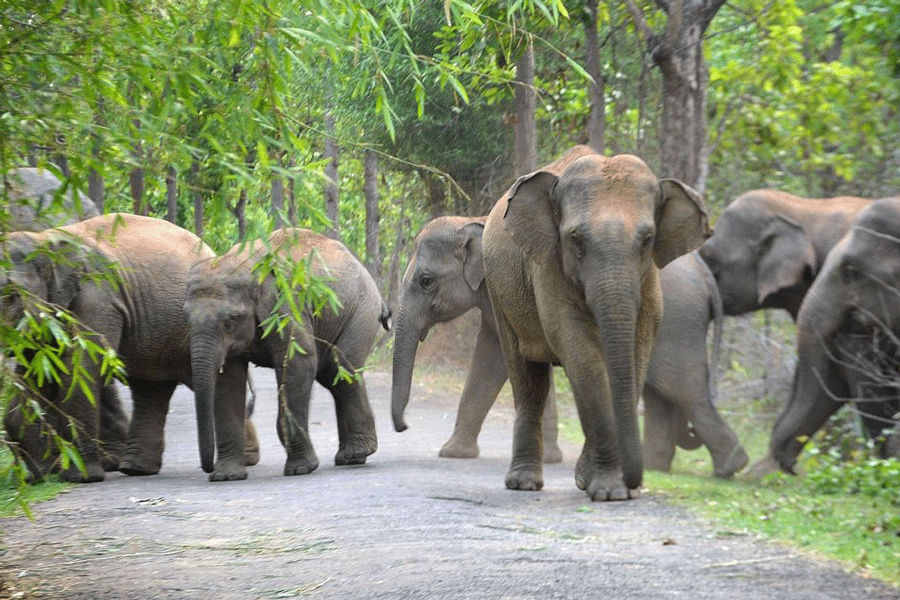The Bengal forest department has installed 30 Artificial Intelligence (AI) enabled cameras to track the real-time movement of elephants at strategic points on the elephant corridor in Jhargram as part of a pilot project to minimise human deaths because of rising human-animal conflict.
"It is currently in an experimental phase. We are observing the entire system and monitoring the utility of the cameras. If the pilot project succeeds, tracking elephants will be easier. We have taken the initiative in association with the Japan International Cooperation Agency (JICA)," said Debal Ray, the chief wildlife warden of Bengal.
A source said if the pilot project yielded the desired results and got the final approval of the government, the current manual system to track elephants in Jungle Mahal would be replaced with AI-enabled cameras.
"Currently, our forest staffers are deployed to track the movement of the elephants. They report to our officials on the movements of loner elephants or herds when they approach new areas.... Foresters face problems during dense fog and heavy rains. The AI-enabled cameras can operate smoothly even when visibility is poor," said a forester.
The forester highlighted the instance of Friday when a loner tusker dragged out a sleeping 70-year-old woman, Kokila Mahato, from her home and trampled her to death in the courtyard in a Jhargram village.
"The elephant came out of the forest and entered the village. If its movement had been properly tracked, the forest staff could have sent earlier alerts to the villagers before it went on a rampage. We can't blame anyone as it is very tough to monitor an elephant, especially on a foggy night. If there had been an AI-enabled surveillance camera, it would have alerted us within a few seconds," the forester said.
The AI-enabled cameras will shoot high-quality pictures of the elephants even in the dark and send an alert to officials concerned in that range through a mobile app with pictures, location and exact time.
"Our job will be to follow notifications on our phone and alert our team members and villagers about the elephant's or herd's movements. We can activate our elephant-driving team if the animal(s) are moving towards any human habitat," said a forest official in Jhargram.
A source said AI-enabled cameras are in use in tracking tigers in states like Maharashtra. However, they would be used for the first time for tracking elephants in Bengal.
Jhargram, a small district in western Bengal, has lost at least 41 persons to elephant attacks in two years.
"We are working on multiple lines to reduce human-animal conflict. The AI-enabled camera is one of those. We are also trying our best to generate food resources for elephants," said a senior forest official.










